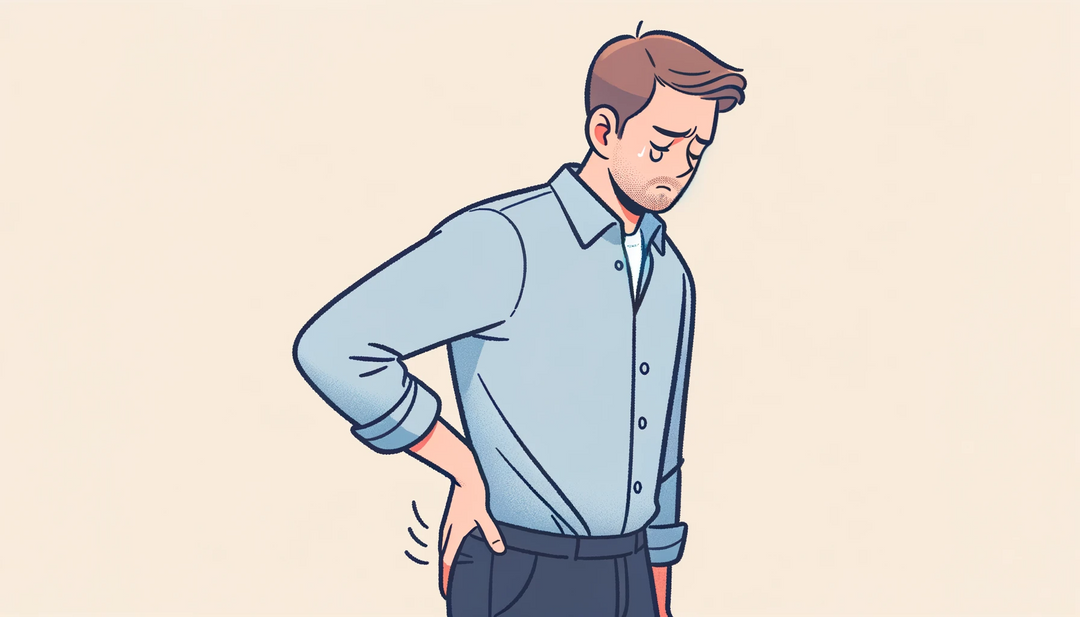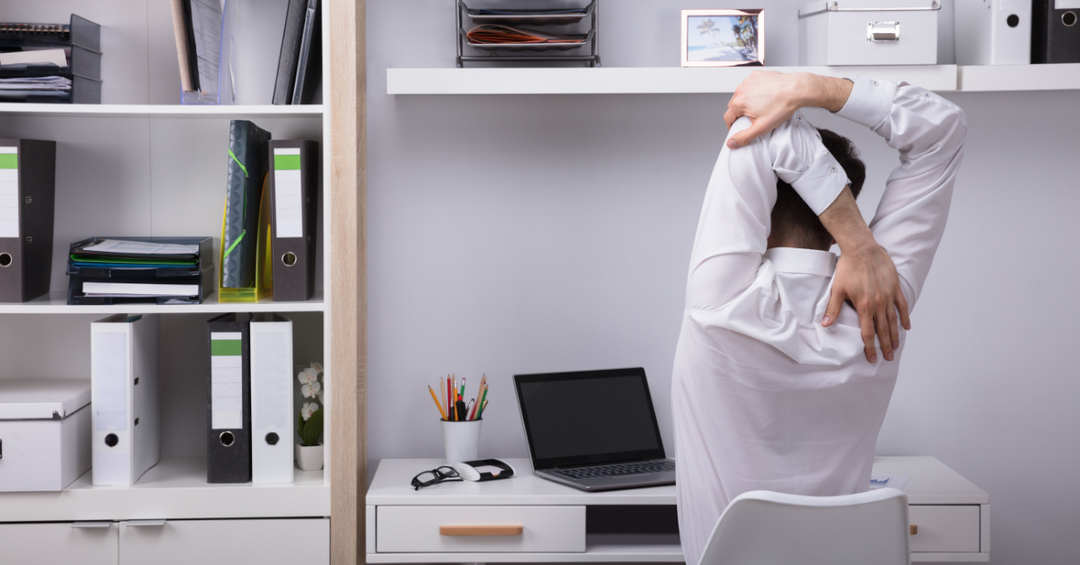Does Sitting Cause Back Pain? Ask the TED Talk doctor!

“I’m going to begin by asking you a question: how many of you have experienced back pain?”
Physical Therapist Amy Selinger poses this question to open her TEDx Talk exploring the causes of back pain. The majority of the audience’s members raise their hand — expected, given that, according to statistics she references, 80% of us will develop back pain at some point in our adult lives.
In surveying the audience, she drops a stark, undeniable truth: we are living in a world with an epidemic of low back pain. And she, through her own challenges with it, has focused her entire practice on finding out why, in order to begin fixing it.
Sitting and Muscle Imbalances
It all starts in kindergarten…
Her Talk connects dots that offer some explanation. Most importantly, she illustrates how for many of us, the main culprit for our chronic back pain is all the sitting we did through grade school, college, and throughout our careers, bound in some degree to a desk — in other words, sedentary.
Because sitting for hours at a time reduces overall flexibility and creates muscle imbalances — as important, core muscle groups weaken while others unnaturally compensate, torquing the body out of healthy alignment and, thus, functional movement.
“People develop specific patterns of movement from their muscle imbalances and the interaction of their bodies with their daily activities”-Amy Selinger, PT, DPT, OCS
Muscle Imbalances → Unhealthy Movement Patterns → Back Pain
According to Dr. Selinger’s work, our movement patterns, defined by the daily activities of our life, either support a healthy movement system or a painful one. And modern life, laden with a lot of sitting, generally supports a painful movement system — characterized by back pain.
She uses the leg muscles as an example, being the largest muscle group in the body. By sitting for extended periods of time, regularly, your leg muscles lose their flexibility and strength through lack of use. And without that flexibility and strength in the legs, we tend to develop an unconscious habit of bending from the waist rather than squatting to pick things up, for example — because it’s simply easier.
“We adapt to activities and traumas we’ve experienced. Some of us develop a healthy movement system, while some of us develop a painful one. In fact, at least 80% of us will develop back pain at some point our adult lives.”-Amy Selinger, PT, DPT, OCS
It is in the unconscious adoption of such habits that we can develop an unhealthy movement system one muscle group at a time.
Think about it in your own life — do you naturally squat to pick things up yourself? Ever?
3 Hacks for Rebuilding Healthy Movement Patterns to Reduce Back Pain
Dr. Selinger gives the crowd 3 fundamentals for rebuilding and maintaining a healthy movement system.
Hack #1: Strengthen your core
Poor posture, lower back pain, weakness in arms and legs when used, and inability to ‘hollow’ your stomach are all signs of a weak core. There’s more ways to strengthen a weakened core than just hitting the gym. You can strengthen it throughout the day right at your desk simply by working standing up for periods at a time, as standing engages your core naturally.
These periods of standing work can be made comfortable and energizing with the help of the right standing desk chair that provides lumbar support for a comfortable, upright working posture — i.e. supported standing.
Hack #2: Move more
Taking breaks from the computer throughout the day refreshes your mind and energizes your body. Regularly engaging your big muscle groups like your leg muscles and glutes through these ‘movement’ breaks also clues you in to dysfunctional, imbalanced movement patterns you might exhibit yourself. And awareness is the first step, as they always say :)
If you struggle to break away from the screen, try out an app that sends reminders to get up and move. And if you’re not yet convinced of the value of unplugging because you’ve always been a ‘power through’ kind of a person, spend 15 minutes diving into the ample research proving that taking breaks throughout the day does improve performance. You’ll be convinced and with the times after reading a few studies.
Hack #3: Switch up movements you repeat daily
Dr. Selinger offers a fun challenge of taking stock of the movements you repeat daily and considering creative, odd, or silly ways you could vary them to rebuild healthy movement patterns — like getting out of bed on the ‘wrong side,’ or carrying the groceries with your weaker arm. This challenge can help you engage muscles that your body might be conditioned, through injury or lack of use, to neglect.
Try it for yourself — from the second you wake, which tasks do you carry out every day using your body? How could you modify these repeated movements even slightly, to challenge your muscles and restore balanced strength over the course of the day?
The Ultimate Accomplice in Rebuilding Healthy Movement Patterns?
a standing desk.
These 3 hacks dovetail with the work our team has done to demonstrate how movement is a key to alleviating back pain at the desk. And, more precisely, how a standing desk is an essential hack for bringing movement to sedentary work, when used properly (see our blog post: How to Use A Standing Desk for more on this).
Building more healthy movement into your day is made a whole lot easier with the right tools that support and encourage you as you make the difficult but positive change — such as a quality standing desk accompanied by a quality standing desk chair.
We’ve even talked about setting the ambitious goal for yourself of maintaining ‘perpetual motion’ at the desk in order to fight the inertia of modern life. Because movement is what the body was designed for. Not ‘sitting all day,’ as Dr. Selinger shows by connecting the dots between sitting and chronic back pain.
How are YOU doing in your journey toward healthy, happy, functional movement? What elements of moving more or improving flexibility do you struggle with? What hacks and tools have helped you find a comfortable workflow?






Leave a comment